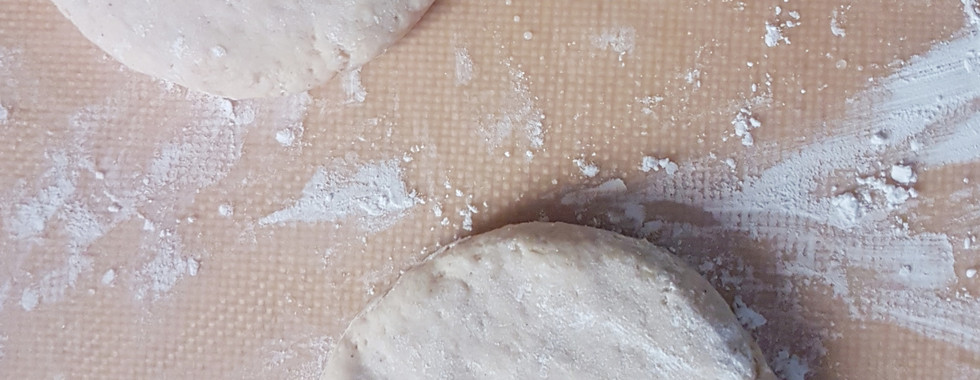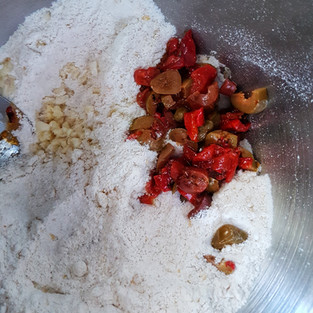

Ingredients
(makes 10 – 12 cookies)
½ cup brown rice flour
¼ cup almond flour
¼ cup potato starch
¼ tsp xanthan gum
½ tsp baking powder
½ tsp baking soda
¼ tsp salt
1 tbsp natural unsweetened cocoa powder*
3 tbsp brown sugar
1 tbsp white sugar
¼ tsp molasses (optional)
1 tbsp coconut oil
½ cup coconut milk
1 tsp vanilla extract
1 or 2 drops of red coloring
1 oz chocolate chips Notes
You can use a pre-packaged gluten free flour blend to replace the brown rice flour, almond flour and the potato starch. Omit the xanthan gum if already in your mix
I sometimes add 1tsp extra of cocoa powder for a stronger chocolate flavor
Directions
Line a baking sheet with parchment paper
In a mixing bowl add the dry ingredients and stir to combine. Leave out the chocolate chips
Add the molasses (if using), mix and spread it throughout the dry ingredients as far as possible. Add ¼ cup of the coconut milk and the rest of the wet ingredients to the flour mixture. By hand, knead or mix until the dough is slightly sticky but holding together. Add the rest of the coconut milk a little at a time if needed. Fold in the chocolate chips
Scoop rounds of the dough (about 2 tablespoons in size or as preferred) onto a parchment lined sheet leaving a space between each round. If you find the dough difficult to handle, chill for about 15 minutes before shaping. You do not need to make smooth balls.
With wet hands flatten into discs. The cookies do not spread much so flatten to your desired thickness.
Chill the tray of cookies in the refrigerator for 20-30 minutes (more if you can, even overnight)
While the tray is in the refrigerator, preheat the oven to 375F
When ready, bake for 8-10 mins until the edges of the cookies are set. The top of the cookie in the center should be set but feel soft if pressed.
Cool on a rack and enjoy! Store in an airtight container on your kitchen counter for up to 5 days, (if your kitchen is hot and humid, store in the refrigerator).
















